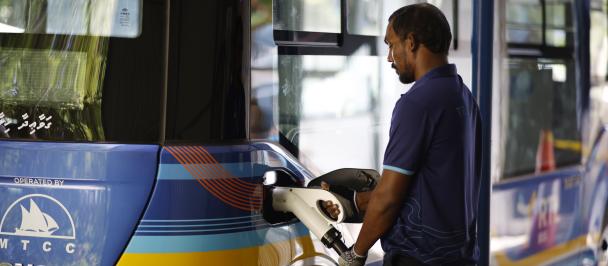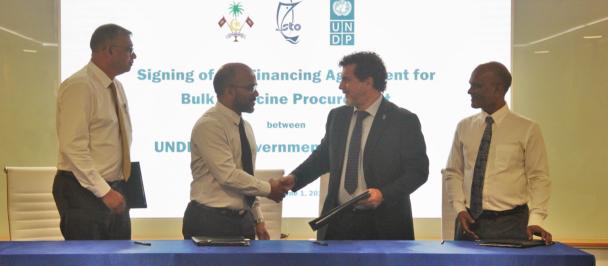By Abror Riksiev, Procurement Analyst, UNDP Maldives
Exploring Dhuvaafaru Island's Innovative Infectious Waste Management Initiative
June 30, 2023
Maldives. What is the first thing that comes to your mind when you hear this word? Relaxation, beaches, resorts, the undersea world... The same thing happened to me when I first heard that I was being invited to an interview for UNDP Maldives. I began to read a lot about this country, it’s culture, way of life, people, the most developed industries of the country, it’s social and environmental problems - there was a lot of information and it had to be put in my head in the right order, not least of them being the white sandy beaches and the clear blue seas.
Upon arrival, I actively got involved with the technical details of our project - which focused on ‘The Improvement of Infectious Waste Management in Southwest Asia’. It included how different stakeholders interacted and were involved, the timing and magnitude of the changes the project would entail, and the innovation that UNDP plans to bring within this new project. I learned a very interesting and important thing: In general, waste disposal in the Maldives is a very complex process with a large number of participants and stages in the chain. When you are born and live on the mainland (like me, all my life), the issue of waste disposal is usually not a big problem, and you don’t even think about how it works. The biggest surprise about the Maldives for me was the presence of a whole separate ‘garbage island’ - Thilafushi. For me it took a 360-degree absorption of the whole process, to really understand the importance of medical waste disposal here.
Average estimates of waste in the world show that hospitals produce about 0.3-0.5 kg of waste per hospital bed per day. However, this figure and the basic composition of the waste vary greatly depending on local conditions, grade of hospital and other factors. In general, medical waste makes up about 2-3% of the total waste, but it is one of the most hazardous wastes [A1] .
For example, higher income countries generate much more waste and plastic, often accounting for more than half of all medical waste. Because of this huge difference, there is no single best solution for managing medical waste[A2] . Countries have its own staff of specialists who solve the problem in local realities. The COVID-19 pandemic has resulted in a double burden of increased waste plus reduction in the capacity of healthcare workers to manage waste due to increased workload of patients, work with COVID-19 and social restrictions. As a result, the safe handling of medical waste has suffered.
According to the United Nations Development Program (UNDP) in five Asian cities, COVID-19 increased the number of dangerous medical waste by 3.4 kg/bed/day. This is about 10 times more than the average volume of hazardous medical waste[A3] .
It was time to see with my own eyes how everything was arranged on the sites on the local islands. The first trip under the project to improve the management of medical waste was a visit to the Health Center in Raa Atoll Dhuvaafaru island. Upon arrival, I was briefed on the history of the island, which turned out to be a relatively newly developed and inhabited, and big compared to others in terms of the population (Dhuvaafaru has a population of over 5,000). The island was inhabited after the 2004 tsunami. It has been planned with wide streets, developed infrastructure, with houses creating the impression of a single ensemble without tall buildings. I liked the fact that the residential sector is separated from the state entities and infrastructure facilities.
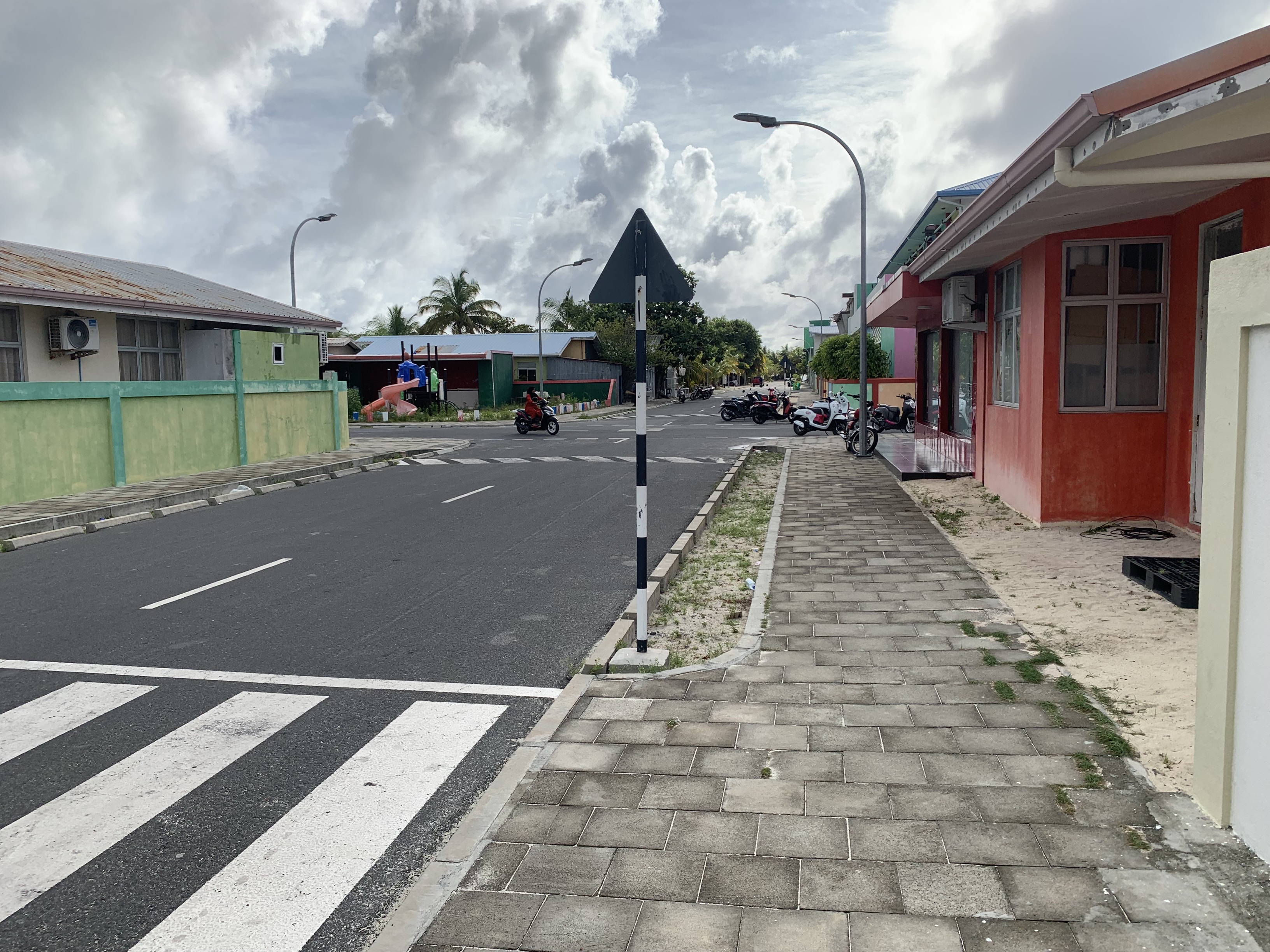
Scenes from around Raa Dhuvaafaru islands.
We arrived late at night, and in the morning we started with my already favorite Maldivian breakfast - mas huni and roshi (Maldivian flat bread with a fresh, tropical tuna and coconut salad).
We were ready to move to the hospital when heavy rain began. Since there are no taxi’s on the island, we asked colleagues from the hospital to pick us up - perhaps this this was the first time an ambulance came to save anyone from the rainfall.
They gave me a short tour of the hospital and I was impressed by how well it was organized and equipped with technical and human resources.
Dhuvaafaru Health Center can be considered a higher-level health facility among the usual islands, with respect to provision of maternal, newborn care and specialty care. The Medical Center provides services for approximately 60 patients in the Outpatient Department (OPD) and an average of 4 patients as admitted cases.
We had a round table discussion with the head of the hospital, where I realized that the UNDP project for the disposal of medical waste is eagerly awaited: there was no need to explain the importance or persuade any of the people in the room. Everyone was on the same page, ready to start construction immediately.
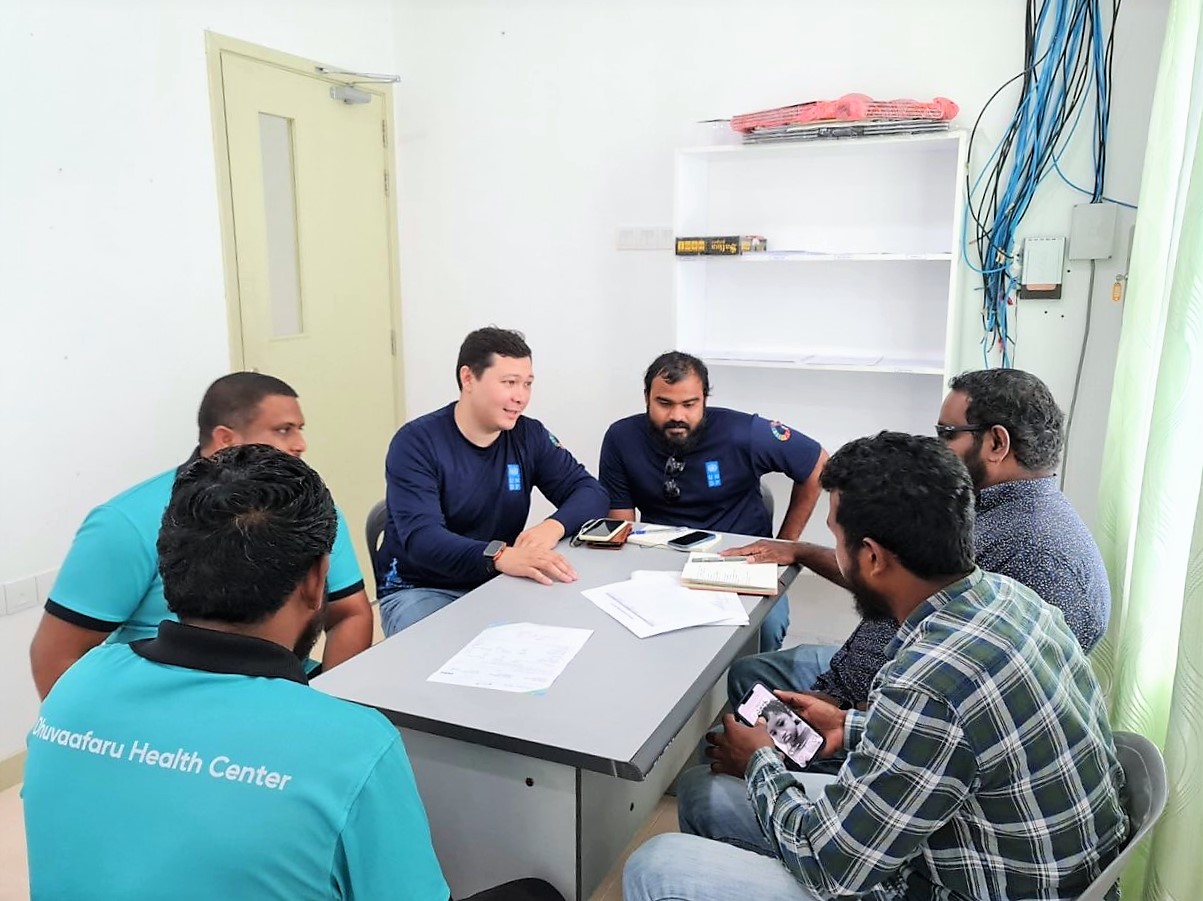
UNDP team meeting with the Dhuvaafaru Health Centre team.
By building a separate block for the disposal of medical waste on the already allocated territory of the Health Center, fully equipped for the disposal of hazardous and non-hazardous waste, we minimize existing risks such as:
● Injuries caused by sharp objects;
● Poisoning and pollution of the environment as a result of the release of drugs, in particular antibiotics and cytotoxic drugs;
● Poisoning and pollution of the environment with sewage;
● Poisoning and pollution of the environment with toxic elements or compounds such as mercury or dioxins released during waste incineration.
And most importantly, by implementing our project, we will protect the most at-risk units in the system: first-line medical workers; waste pickers; waste processing workers; people who live nearby and of course our environment.
Saying goodbye to the staff, I remembered the last words spoken to me by the Senior Administrator and his firm handshake: “We will be waiting for you to come back!”
This was not your usual phrase of Maldivian hospitality. It was something else that makes you realize the importance and value of what you do. It shows that people are hopeful and dependent on your job. This for me was an indicator that we are on the right track, that we can and will bring the solutions that people wanted, even if in small steps, even if through a medical waste project - and but we will do it for sure.
UNDP will definitely return to Raa Atoll Dhuvaafaru, and this time not for studies or monitoring, but to launch a new waste management block in the Health Center.
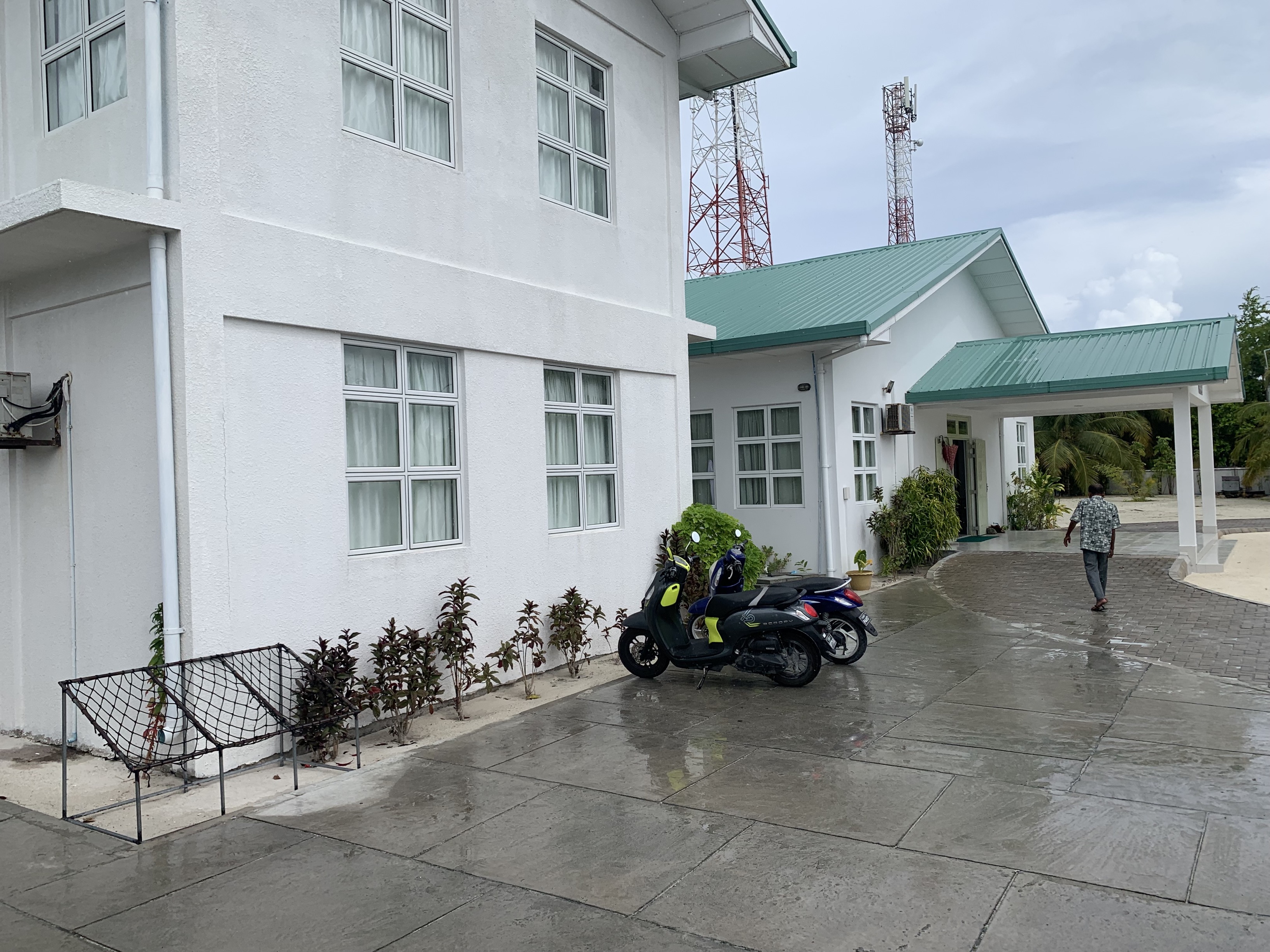
Raa Atoll Dhuvaafaru Health Centre.
Reference
[1] WHO. Health-care waste. (2018, February 8. https://www.who.int/news-room/fact-sheets/detail/health-care-waste)
[2] WHO. Medical waste: why it is so important to dispose of it correctly. (2021, October 25. https://www.undp.org/kyrgyzstan/news/medical-waste-why-it-so-important-dispose-it-correctly)
[3] UNDP. (2020). COVID-19 Rapid Assessment On Healthcare Waste Management. http://greenhealthcarewaste.org/wp-content/uploads/2020/12/UNDP-COVID-19-Rapid-Assessment-on-HCWM-in-Selected-Countries.pdf

 Locations
Locations